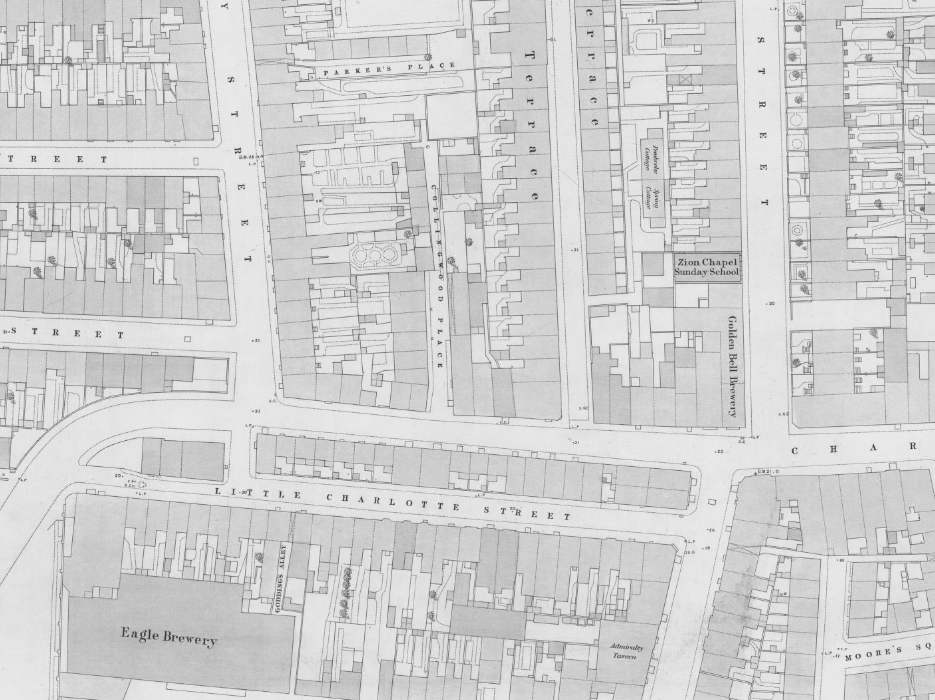

Age: 26
Sex: female
Date: 9 Aug 1947
Place: Little Charlotte Street, Portsmouth, Hampshire
Isabel Mary Wardle was found raped and strangled on a bomb site in Little Charlotte Street, Portsmouth on the morning of 9 August 1947.
Her body was found at about 8.45am on the Saturday morning by the son of the landlord of Cox's Hotel which overlooked the site when he opened the window of their living room in the morning. The son said that neither he nor of father heard any suspicious noises in the night.
When the police saw her body, they said that they thought that she had been dead for some time. They said 'The body was naked, but the upper portion was covered with her dress. This woman has been in the City for about six weeks and was known as Doris Gillander. Inquiries revealed her correct name to be Isabella Mary Wardle'. When the police made their statement, Isabella Wardle's brother interrupted to say that her name was not Mary, but Isabella Wardle.
Her post-mortem revealed that Isabella Wardle had not only been strangled, but also 'savagely used'.
The police said that she had been strangled with a sailor’s lanyard.
Isabella Wardle was initially known as the 'Girl in the red sandals' before her identity was released. When she was found she was naked apart from one red sandal on her right foot. The other sandal was found a short distance away.

Her body was found in a place screened from the road by tall weeds and grasses. She had been strangled with some violence and her clothing was disarranged.
When the police searched the place where Isabella Wardle was discovered, they found a small piece of bloodstained lanyard amongst the weeds after which the police took dozens of statements from sailors at the nearby Royal Naval Barracks in an effort to trace the rest of the lanyard, which they said they believed a sailor had been wearing.
The police also found an empty brown handbag nearby which was later found to have belonged to Isabella Wardle. It was the second handbag found in the area.
It was later revealed that Isabella Wardle had earlier been seen in the company of two sailors at a coffee stall in Guildhall Square on the morning of Saturday 9 August 1947 at about 1am by a woman, about 7 hours before her body was found.
The police said that they were interested in speaking to a naval rating who was said to have been wearing two good conduct badges.
Isabella Wardle was a native of Sacriston in Durham and had come to Portsmouth from London about six weeks earlier and had since been staying at various addresses. She had left Durham about four years earlier.
Isabella Wardle's brother, who identified her body, said that as far as he knew Isabella Wardle was single and that she had no fixed occupation, but believed that she had had domestic situations. He said that he last saw her in 1943 when she left home and went away on her own and said that the last place that he heard of her from was Aldershot in 1944, noting that she had no fixed abode. He said, 'She would not settle down. She would not write and tell us where she was, or where she lived'.
She was described as fair-haired.

An able seaman who had been stationed at the Royal Naval Barrack in Portsmouth said that he had known Isabella Wardle as Doris Gillander and that he had met her in Leicester Square in London on a Saturday six or seven weeks earlier and then again at Portsmouth railway station on the following Monday evening and said that they had then lived at 11 Wheatstone Road in Southsea. He said that the last that he saw of her was on the Saturday morning, 9 August 1947, at about 12.15am outside the coffee stall at the Guildhall.
It was later revealed that the police did have a suspect, but he was never found. It was said that he had associations with Deal and Shoeburyness.
It was reported that the nature of seaside towns around the country was helping the suspect, and others, to evade detection due to the number of strangers there coming and going.
Her inquest on Thursday 16 October 1947, returned a verdict of 'Murder against some person or persons unknown'.
Little Charlotte Street, which was just south of Charlotte Street has since been demolished. The street was where the western part of the Cascades Shopping Centre is today.
see Sunderland Daily Echo and Shipping Gazette - Saturday 17 June 1950
see The People - Sunday 21 September 1947
see Hampshire Telegraph - Friday 15 August 1947
see Western Morning News - Thursday 16 October 1947
see Sunderland Daily Echo and Shipping Gazette - Tuesday 12 August 1947
see Daily Mirror - Tuesday 12 August 1947
see Coventry Evening Telegraph - Tuesday 12 August 1947
see West Sussex Gazette - Thursday 14 August 1947
see Dundee Courier - Tuesday 12 August 1947
see Western Daily Press - Tuesday 12 August 1947